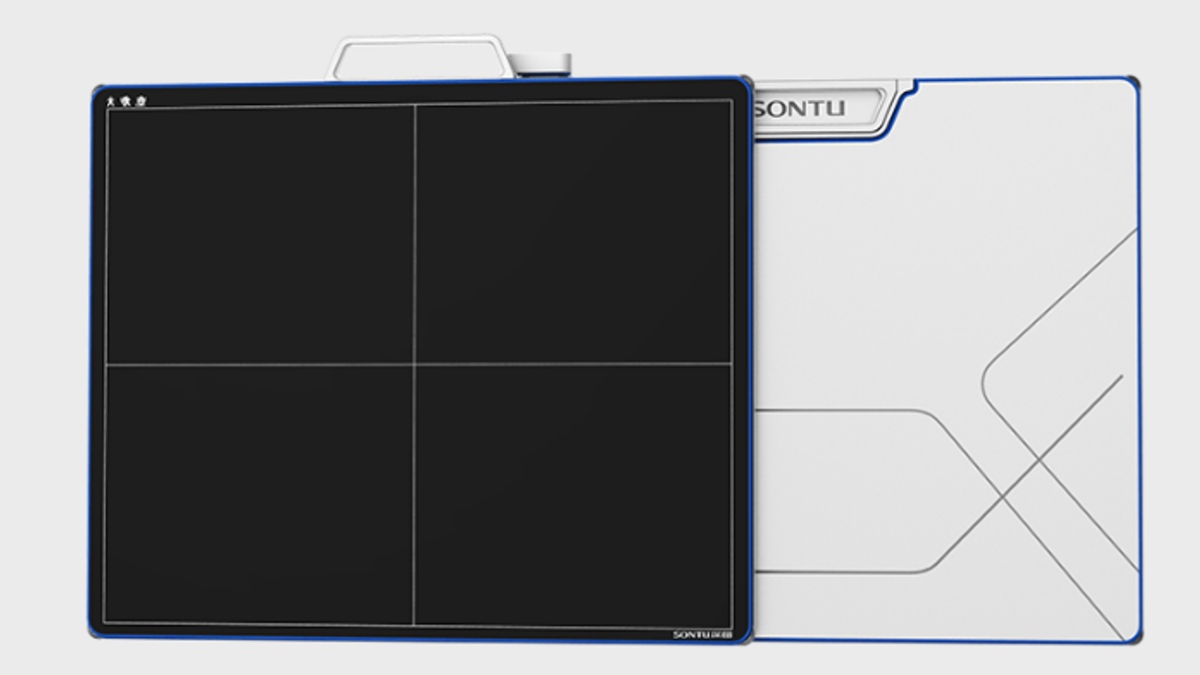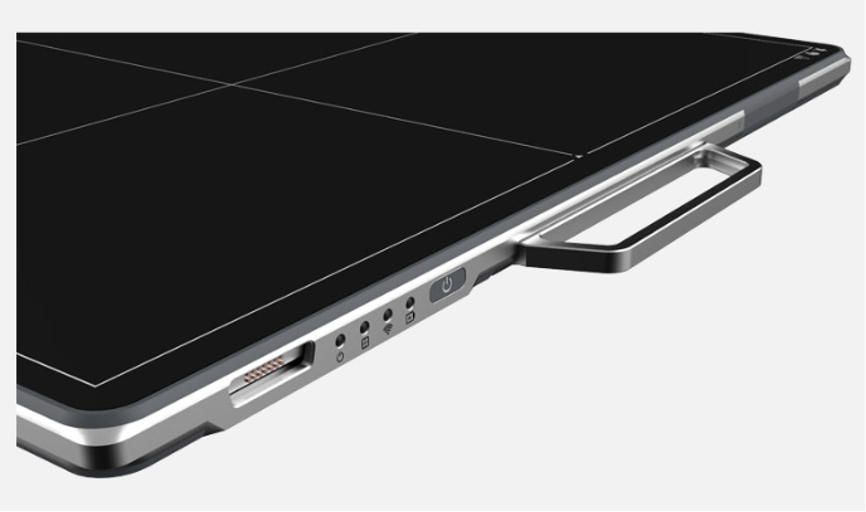
A flat panel detector (FPD) is a critical component in the digital radiography (DR) system for the conversion of X-rays to light (indirect conversion) or charge (direct conversion), which is then read out by using a thin film transistor (TFT, CCD, and CMOS) array.
The flat panel detector is a solid-state X-ray digital radiography device, similar in principle to the image sensors used in digital photography and video. Due to their ability to provide high-quality images with low radiation doses to the patient, they have largely replaced film-screen systems in traditional X-ray systems. Overall, flat panel detector radiology plays a crucial role in the accuracy and effectiveness of modern X-ray imaging.
Table of Contents
Advantages of Flat Panel Detector
Using FPDs in digital X-ray equipment offers several advantages over traditional film-screen systems. Some of the main ones include:
. High Sensitivity: Compared to analog film, FPDs are more receptive to X-rays. This is because their sensitive portion contains thousands of pixels that contribute greatly to the accuracy of an image’s test samples. Their sensitivity levels also make it possible for them to react quickly and aptly with even the smallest value in X-ray absorption, reducing radiation exposure in human subjects significantly – making this technology especially useful for chest and abdominal imaging purposes where low doses are essential.
. Short Processing time: The exceptional responsiveness of flat panel detectors ensures that X-ray beams are quickly identified when passing through test specimens, allowing for a rapid image generation and processing time.
. Less Image Distortion: In contrast to other image detection devices, FPDs have a larger detection area and a wider dynamic range, which means they can produce images with minimal distortion. As a result, the image produced is high-quality and coherent, central to accurate analysis and identification of flaws.
How Does the Flat Panel Detector Work?
Depending on different energy conversion ways, DR flat panel X-ray detectors can be divided into indirect flat panel detectors (indirect FPD) and direct flat panel detectors (direct FPD), both of which work differently.
. Working principle of indirect FPD: The scintillator on the surface of the indirect FPD converts the X-ray through the human body into visible light, which is then converted into an electrical signal. The signal turns into stored charge on the capacitor of the photodiode. Later, the stored charge of each pixel is scanned and read out via the control circuit. After analog-to-digital conversion, the signal is changed into a digital signal, then transmitted to the computer for image processing. That’s how the digital X-ray image is produced by indirect FPD.

- Working principle of direct FPD: Direct FPD utilizes photoconductors to capture and convert incident X-ray photons directly into electric charge. Then X-ray photons incident generate electron-hole pairs via the internal photoelectric effect. Later, a bias voltage applied to the depth of the selenium layer draws the electrons and holes to corresponding electrodes. The signal is then read out by using underlying readout electronics (mostly by a thin-film transistor (TFT) array), thereby generating images.
Important Performance Parameters of Indirect Flat Panel Detectors
The performance of the FPD plays a key role in the quality of the final X-ray image. Therefore, you need to consider important performance parameters of the FDD before purchasing one for your DR X-ray unit. Since the indirect FPDs are more commonly used, this article will present the indirect ones as an instance to show the to-be considered key performance parameters:
- Detective quantum efficiency (DQE): It determines the resolution ability of the flat panel detector to different tissue densities. For the chest examination that aims to observe and distinguish the density of different tissues, an indirect FPD with high DQE is required. In this case, a higher contrast image is easier to be produced, conducive to a better diagnosis.
- Spatial resolution: The spatial resolution of an indirect FPD determines the ability to resolve the fine structure of the tissue. An indirect FPD with high spatial resolution can produce images with fine details, which is especially important for examining mammary glands and joints.
- Sensitivity: Indirect detectors are sensitive to visible light and sensitivity is the ability of the detector to convert X-ray energy into light. The sensitivity of an amorphous silicon detector is determined by four factors: X-ray absorbance, X-ray – visible conversion factor, fill factor, and photodiode visible-electron conversion factor.
- Readout time: The readout time refers to the amount of time spent in the process of digitizing the pixels by the FPD. In emergencies, a shorter readout time is of great importance to enable the veterinarian to obtain information and take treatment more quickly. Additionally, a reduction of image noise can be achieved through a shorter readout time.
- Image noise: Higher image noise results in a lower capability to discern details and a higher dose of X-rays the patient receives. Thus, it’s better to pay attention to the image noise before purchasing the indirect FPD.
- Greyscale value: The greyscale value denotes the brightness of a pixel. High greyscale imaging improves the quality of the image, which results in a very clear image without pixelation and more importantly allows for shape recognition of the item.
Overall, it is important to consider these performance parameters when purchasing an indirect FPD for an X-ray machine, as they will affect the quality and effectiveness of the X-ray images.
Conclusion
FPD is the core of DR technology, which plays a decisive role in imaging quality. If you are in need of a reliable and high-quality flat panel detector for your DR X-ray machine, Look no further than SONTU!
As an experienced supplier of X-ray imaging equipment, SONTU can offer reliable wired and wireless flat panel detectors available in two sizes (14*17 and 17*17 inch). Their FPDs feature high detective quantum efficiency (DQE), sensitivity, spatial resolution, and fast readout time – ensuring that you get clear, high-resolution, and accurate images within no time. Adopting the cesium iodide process, SONTU FPDs emit lower X-rays, resulting in greater safety for technicians and patients alike. Additionally, they are highly environmentally compatible thanks to IP54 dust and water-resistant technology.
Contact SONTU today and see the difference their X-ray panel detectors can make in your X-ray imaging!
For more information regarding SONTU X-ray equipment, please follow the:
Facebook: https://www.facebook.com/SONTUMedical
Linkedin: https://www.linkedin.com/company/sontumedical/